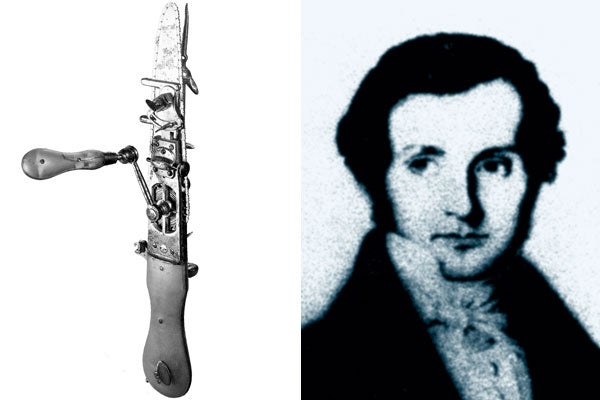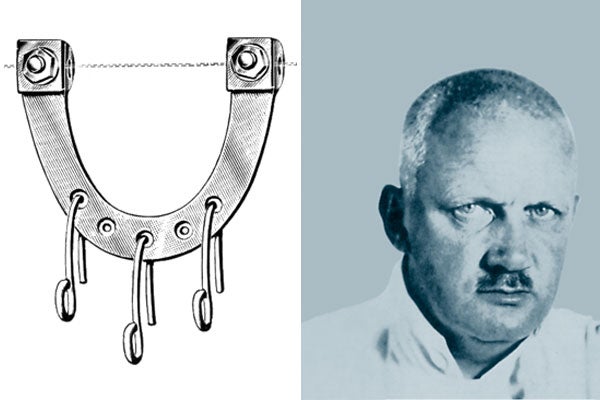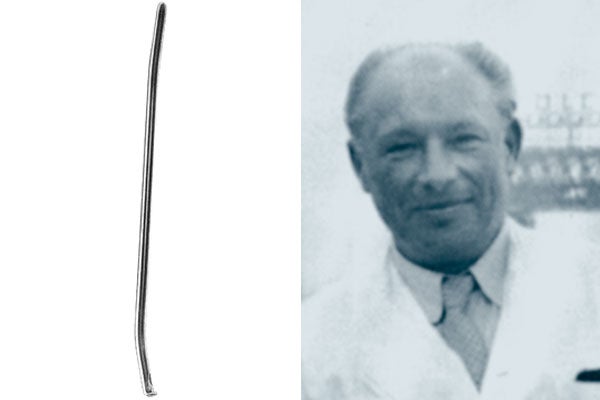Bernhard Heine
German orthopaedic surgeon and physiologist, Würzburg 1800-1846, born in Schramberg, died in Glockenthal/Switzerland
After serving an apprenticeship in his uncle Johann G. Heine's famous workshops, Heine combined in his person the skills of the mechanic and the physician, being master of both the file and the knife in equal measure. In 1824 he began to develop the osteotome, which he brought to public attention in 1830. His attempts to regenerate bone through protective treatment of the periosteum had far-reaching implications.
Martin Kirschner
German surgeon, Greifswald, Königsberg, Tübingen 1879-1942, born in Breslau, died in Heidelberg
Kirschner performed the first successful Trendelenburg's operation to remove a pulmonary embolism. This made him internationally famous. He also developed a new method for forming an artificial oesophagus and a procedure for opening the knee joint. At the same time he was joint editor of almost all the surgical journals of his day.
Gerhard Küntscher
German orthopaedic surgeon, Kiel, Hamburg 1900-1972, born in Zwickau, died in Flensburg
Küntscher invented the elastic intramedullary nail to close fractures from the medullary cavity. He also developed the flexible reamer to open up the medullary cavity, the interior oscillatory saw and the so-called interlocking nail, a detensor for treating comminuted fractures.


